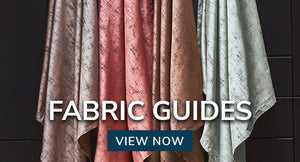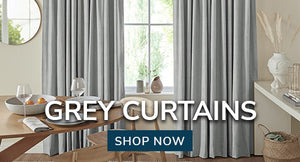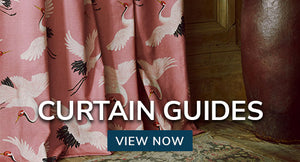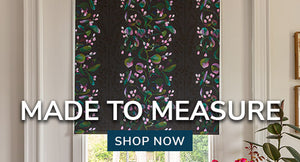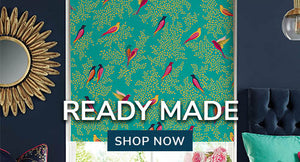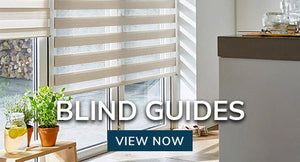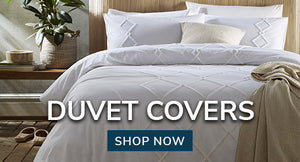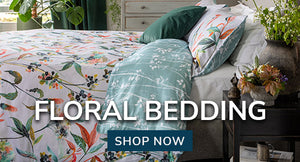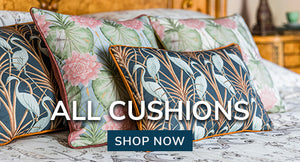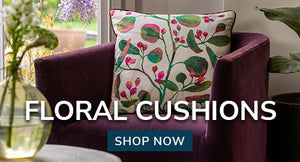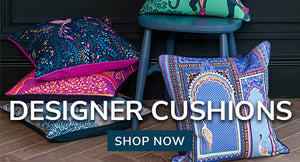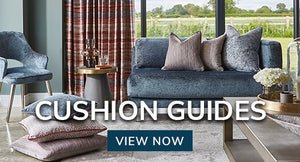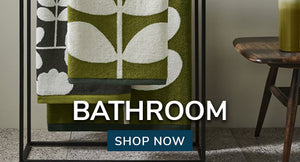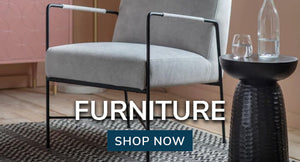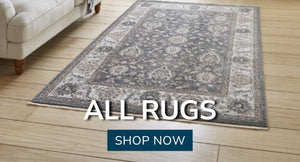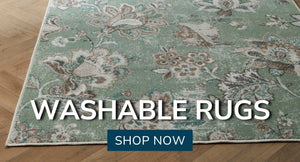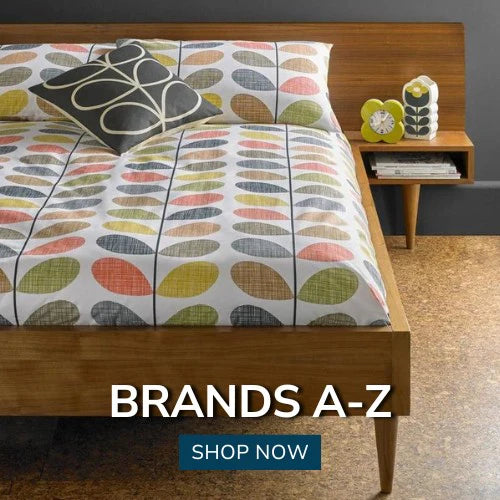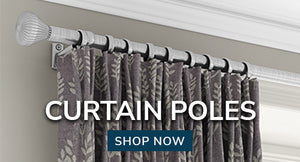Glossary of curtain fabrics
Glossary of useful terms
From pelmets to poplin, here you’ll find a handy explanation of the common terms we use at Terry’s Fabrics. Take a look and find the information you’re looking for below, but don’t hesitate to give us a call if there’s anything else you’re unsure of.
Types of fabric explained
Here we cover some of the specific terms related to curtain fabric, covering over 30 terms and what they mean. These could be of use when making a purchase or considering which fabric is right for you.
Acrylic
Acrylic is a man-made fibre which has many uses given that it’s soft, strong, lightweight and resistant to creasing. Acrylic has a texture similar to wool, and thanks to being synthetic, is often a less expensive alternative.
Brocade
Brocade fabrics usually display a raised pattern make from either silk, cotton, linen or wool, and occasionally from man-made fibres. It’s a thicker, richer fabric than most, and often features two or more different colours. Brocade makes a great fabric for a curtain and upholstery projects, thanks to its design and dense, sturdy feel.
Brocatelle
Brocatelle is fairly similar to Brocade, however with a few subtle differences. Brocatelle features linen to strengthen it, and often sticks to just two colours. As it’s a stronger fabric, it doesn’t drape well, making it a better choice for wall hangings than curtain fabric.
Calico
Calico is often used as a cheaper alternative to cotton. It’s slightly thicker than cotton too, making it sturdy enough to carry fabric paints and stencils. The nature of the material means it shrinks well, making it a desirable choice for tight-fitting upholstery fabric.
Canvas
Made from course jute threads, canvas is used to make a material called buckram. It features a basket-weave, and can be made in various weights.
Chenille
Chenille fabric is a is a soft, warm and cosy fabric with a similar texture to velvet. Its looped pile is what makes it so soft and fluffy.
Chintz
Usually, chintz fabric is cotton based, and features a colourful pattern of birds, fruits and flowers. It can sometimes have a glazed finish too. On its own, chintz is a fairly delicate fabric, but it can be lined to make it stronger. Thanks to its busy pattern, chintz is best suited to small upholstered items, or unglazed chintz can be used for curtains.
Corduroy
Made from cotton, corduroy is a strong fabric that features its distinctive cords that run the length of the material. You can get corduroy with different width cords, as well as made from synthetic yarn with a cotton backing.
Cotton
Available in a wide range of weights and finishes. The unmixed version creases easily but a cotton/synthetic mixture can be more practical. Furnishing cottons should always be used, as dressmaker's cotton is simply not strong enough.
Crewelwork
Crewelwork is a type of hand-embroidered fabric, usually made from white cotton with woollen embroidery that often features trees, flowers and leaves. Thanks to its intricate detail and bold colouring, it’s often best used for wall hangings, curtains for windows or four-poster beds, and cushions.
Damask
Damask fabric is a reversible material, as the detailed pattern which usually consists of two colours, is inverted yet still smart on its underside. It’s a fairly formal fabric, often used in traditional settings such as full-length curtains or restoration pieces. The durability of Damask varies depending on what it’s made of – silk, cotton, linen, wool or man-made fibres.
Dupion
Dupion is mainly used for curtains. It’s a soft material but has a rough textured appearance, often referred to as ‘slubbed’. You can get dupion in many different colours, making it a versatile fabric.
Furnishing Cotton
Furnishing cotton – rather than dressmakers cotton, is a stronger type of cotton used in upholstery. You can get it in a range of weights and finishes, and when mixed with synthetics, can result in a more practical fabric that’s less likely to crease.
Gingham
The distinguished check pattern of two colours that sits on a white background is famously known as gingham. It’s light, often bright, and is a great fabric for kitchens, table cloths and children's fabric.
Lace
Lace can be made from either cotton, viscose or nylon. It’s identified by its light, open work appearance, which makes it the ideal fabric for increasing privacy through your windows, and can be used as delicate bedding and scatter cushion covers. You can also use lace as edging and frills, for more traditional pieces.
Herringbone
Herringbone features an alternating diagonal pattern, created in the twill weave of the fabric. It’s usually made from wool or tweed, and is a sturdy material that’s ideal for upholstery.
Holland
Holland is a plain linen cloth which, as the name suggests, is traditionally from Holland! This type of fabric is used especially for roller blinds.
Indienne
Made from cotton, Indienne fabric was first imported near the end of the 16th century. It features a print or embroidery incorporating flowers and leaves, often on a light-coloured background that brings out the contrasting colours of the design.
Jacquard
A jacquard is the part of the loom that controls the type of elaborate pattern the loom produces. Traditionally, this would have appeared as a series of punched cards that dictate which threads are woven, now, this process is controlled by a computer.
Linen
Made from flax, linen is strong and versatile. Alone, it can be prone to creasing, but when blended with cotton, it can become even more versatile! You can make linen even stronger by blending it with synthetic yarn. Linen is ideally used for chair and sofa slip-covers. It can sometimes be used for curtains too, but can occasionally be a little too stiff to achieve the desired curtain drape.
Moire
Moire (also known as watered silk) can be made with silk or a synthetic substitute, and is known for its shimmery, wavy appearance. It’s really light, meaning it’s great for light upholstery, walling and cushions.
Moreen
With a similar appearance to Moire (referred to as a watered pattern), moreen is made from wool or wool and cotton. It’s pretty heavy, making it a sturdy material.
Ottoman
A very hard-wearing fabric, ottoman features a horizontal rib pattern. Its strength makes it a good choice for upholstery, and it can be customised to feature different coloured stripes. It’s available in cotton, silk and synthetic yarns.
Plush
Fuzzy, soft and cosy, plush fabric is similar to velvet, but with a longer, less dense pile. With a comforting texture, it’s a great choice for cushions.
Polyester
Polyester is perhaps one of the most well-known types of fabric. It’s made from a polymerised substance, it’s versatile, strong and comes in many different colours.
Puddle(d)
This refers to the puddle-like appearance created by having your curtains over-long, so that the excess material sits on the floor and creates a ‘pool of fabric’.
Rep
Made from lightly woven cotton, rep is a type of ribbed cloth that’s often used in upholstery.
Satin
Satin has two different textures. One side is smooth and shiny, and the other is appears more matte. It can be made from silk, cotton or a synthetic fibre, but its delicate nature means it can be difficult to clean.
Shantung
Shantung is usually one shade. It can be made from silk or a synthetic material, and is distinguished by its slightly slubbed appearance. This refers to it having a slightly rougher, mildly bobbled texture. It’s a great choice for curtains and cushions.
Silk
Silk is a natural fabric. It’s made from the cocoons of silk worm larvae, and can be dyed in many different shades. It’s a very light fabric, and can be susceptible to damage from sunlight, so bear this in mind when using it for your bedding. It can also be protected with linings to be used for blinds and curtains.
Silk noil
Spun silk creates a waste product, that’s mixed with cotton or wool to create silk noil. It forms tiny balls on the surface, and often features a shimmer.
Taffeta
Taffeta fabric is a smooth fabric originally made from woven silk. It’s thick, and is now more readily available as a plain fabric. It is a sturdy fabric, and can also come with an added shimmer.
Tapestry
You can use tapestry to make curtains and upholster chairs. It’s a patterned material that comes in a wide range of colours and designs, and can be made by machine or by hand.
Thai silk
Thai silk is iridescent, which means the colour and appearance can change depending on the angle you look at it. It’s known for its vivid appearance, and can often be quite luxurious.
Ticking
Strong, sturdy and reliable, ticking fabric is very hard-wearing. It’s often used for roller blinds, and is also an effective choice for modern upholstery. It’s a stiff fabric, and is often relatively inexpensive.
Toile
Used for bed hangings, curtains, wall hangings and light upholstery, toile is identified by its classic depiction of a rural scene or design. It’s often printed in a deep pink onto a cream background, but you may also see it often in in a blue on a white background.
Tweed
Easily identifiable, tweed is made from wool yarns. It’s warm, comes in a variety of colours and textures, and can be used for curtains and upholstery fabric.
Velour
Ideal for making heavy curtains or tablecloths, velour has a thick pile that lies in one direction. It can be made from cotton, wool or synthetic fibres.
Velvet
Similar to velour but with a more closely woven pile, velvet comes in many different colours and weights. It’s ideal if you’re looking for a fabric to drape, but often doesn’t work for upholstery, as the pile is easily flattened. As curtains, velvet can also act as a great insulator.
Worsted
Made from twisted yarn, worsted is a hard-wearing fabric. It’s smooth and strong, making it a great choice for upholstery.
Sheers and lightweight fabrics explained
Here we cover some of the terms related to lightweight and sheer fabrics, such as phrases and definitions related to net curtains, voiles and muslin fabrics.
Georgette
With an appearance like crepe, georgette is a fine material. It’s ideal for draping, and is available in numerous different shades. It’s a good choice for Austrian blinds, as well as beds, windows and curtains.
Muslin
Made from cotton, muslin is a light gauze-type material. It often features floral patterns or motifs, and is relatively inexpensive.
Net
Net is made from cotton, silk or man-made fibres. It has an open-mesh appearance, and is available in many different colours.
Cheesecloth
Similar to muslin, but slightly denser in appearance, cheesecloth is light and soft. It’s a loosely woven fabric made from cotton.
Poplin
Made from cotton or rayon, poplin can be light to medium in weight, and features a fine rib. It can also come with a slight sheen, and is a good choice for draping. It’s inexpensive, and can be used for loose covers.
Voile
Finely woven, voile fabric is semi-transparent. It’s made from cotton, silk or synthetic fibres, and is often used to make sheer curtains and dressing-table skirts thanks to its crisp appearance.
Linings explained
Linings are used to give curtains thermal or black out curtains, however there are specific types of interlining fabrics. Here are a number of phrases and their meanings to consider:
Buckram
Made from coarse cotton or linen, buckram has a net-like appearance and is most commonly used to stiffen pelmets and tie-backs.
Bump
An interlining, bump is often used when you want to add an insulating layer, or add body to another material. It’s soft, and is a cotton-waste material.
Cotton sateen
It’s possible to get cotton sateen in many different shades, although buff-coloured or white is the most common. It’s the most popular material used to line curtains.
Dacron
Soft and fluffy, Dacron is a synthetic fibre you’ll most likely have seen used to stuff cushions. It’s a common material used for filling and padding.
Interlining
Interlining is a thin material, that is used as an additional layer between your curtain material and curtain lining. Its benefits include helping to improve the ‘hang’ of your curtains, or to make a material look and feel bulkier.
Lining
Lining is a material that’s sewn into your curtains. It can be used to protect your curtain material from light damage, or to add weight which will help the curtains to hang better. It can also be used as an extra insulating layer.
Roc-lon
Primarily used to make blackout blinds and to add insulation, Roc-lon is a rubberised fabric. It’s available in both white and cream.
Wadding
Soft and pliable, wadding is most commonly made from polyester and is used to gently pad out material to give it a smooth or filled appearance. For example, you may use wadding when creating goblet headings in your curtains.
Trimmings explained
Here we cover a selection of trimming related terms, covering different types and their purpose for finishing off your curtains.
Block fringe
Often used to accessorise curtains, block fringe is a type of fringe trimming that features equally sized sections of different colours.
Bullion fringe
Bullion fringe is similar to regular fringe trimming, but the tassels are twisted together to form loops of rope. It’s made from wool or silk, and comes in many different colours, sizes and styles.
Chou
Made from circular pieces of fabric that are gathered to make the curtain appear caught up, chou is a style of ornamental curtain detail that comes from the French word for ‘cabbage’.
Gimp
A detailed trimming, a gimp is an intricately woven braid that’s used to ornament curtains.
Picot braid
Picot braids are woven, and are distinguished by their bobble edging. They can be made in various different colours.
Rosettes
Purely decorative, rosettes can add a lovely finish to your curtains. They can be used to direct attention to certain parts of your curtain display, and are often attached to headings, swags, tails and tie backs.
General terms explained
Lastly, here are some more general terms that are relevant to choosing fabric, but that don't fit into any of the above selection of fabric terms.
A la duchesse
Sometimes referred to as an angel bed, a la duchesse beds have a canopy above the bed itself, but instead of being supported by posts in each corner, it’s suspended from the ceiling.
Applique
Applique is used as a form of decoration. It consists of one material superimposed onto another, and can be anything from figures, characters, patterns or embroidered bands.
Arabesque
Another form of decoration, arabesque patterns usually appear as symmetrical branches, leaves or other plant-like shapes.
Architrave
An architrave is the name for the wood that surrounds either a door or a window frame.
Arch window
This refers to the shape of the top of a window.
Austrian blind
Austrian blinds are made from soft fabric and often feature a ruching at the base.
Bay window
Bay windows project out from a building at an angle. They can be curved, square or angular, and have all kinds of features such as seats, extra space or storage.
Bed valance
A valance for a bed is used to cover the bed’s base. They’re material, and can be straight, pleated or ruched.
Bosses
Bosses work in much the same way as curtain ties. However, they are fixed to the wall and are solid in order to hold curtains open. They’re also called ombras.
Box pleats
Box pleats a common feature in curtains that are made from folding the material to the back at both sides of the pleat. They’re flat in appearance and always symmetrical.
Cafe rod
A cafe rod is a style of rod used for hanging curtains. It’s more commonly used for cased or scallop-headed curtains, and is made from brass.
Cased heading
Also referred to as a slot heading, this refers to how the curtains will be hung. It’s a simple design that features a hemmed top, with space for a rod or narrow pole to run through.
Contrast binding
Binding is found around the perimeter of curtains. It’s a strip of fabric that’s sewn on to define the edges. Here, contrast refers to this fabric being a different colour to the curtains themselves.
Cornice
Cornices are found at the top of a wall. They’re often decorative, and sit along the outside edge of the ceiling, that connects to the wall. You can also find cornices above curtains.
Cornice pole
A cornice pole is a type of curtain pole, typically used to hang curtains that are quite heavy.
Corona
Coronas are semi-circle shaped, and are used to hang curtains that drape over a bed.
Coronet
A coronet is a fabric goblet. It’s hung above trumpets or tails.
Curtain headings
This term refers to the finish of the curtain at the very top. You’ll find numerous styles available, including gathered, pleated and flat.
Dead wall space
This refers to the area of wall above a window, below the coving or ceiling line.
Decorative tail
Decorative tails can be placed between other decorative curtain swags. They’re often short, are placed at the point at which a swag intersects with another.
Dorma rod
A dorma rod is the name for the type of curtain rails used to hang curtains on dorma windows.
Dorma window
Dorma windows are those that protrude from a sloping roof.
Dress curtains
Dress curtains are purely decorative. They’re designed to decorate a space, and aren’t meant to be drawn.
Drop down sides
This term refers to the outside edges of an Austrian blind. These are the edges that aren’t scooped up in the iconic ruffled style by the blind’s cords.
Dropped down heading
A dropped down heading is the frill found at the top of a gathered heading on a pair of curtains.
Eyelet
This is the hole by which the eyelet curtains hang. They’re most often reinforced, either by a metal or plastic hoop.
Fabric covered lath
A fabric covered lath is used to conceal the appearance of the curtain rail. It’s covered in material – usually the same as the curtains – and is a kind of narrow pelmet that fits to the front edge.
Fan edging
Found around the perimeter of curtain fabric, fan edging creates a delicate scalloped edge.
Festoon blind
A festoon blind features several columns of ruching when fully down, meaning that when raised, it creates neat billows.
Finial
Finials are a decorative element found at either end of a curtain pole. They were originally incorporated for practical reasons to stop curtains falling off, but now have a more aesthetic purpose.
Flat pelmet
Pelmets are used to cover curtain tracks or rails. Flat pelmets consist of a covered band of buckram, canvas or ply wood, fixed to the front edge of a pelmet board.
Flax
Flax is a type of plant, the stem of which is used to create linen.
Flemish Heading
This refers to the style of the top of your curtains. A Flemish heading features goblets, with pleats attached by a hand-sewn cord.
Four poster bed
A style of bed that incorporates four pillars in ether corner, usually connected by a fabric “ceiling”.
French pleats
Also known as pinch pleats, this style of pleat features three folds that appear “pinched”. They’re hand sewn, and separated by a flat section of curtain.
French windows
French windows are a set of double doors on your home that open onto the garden. They can also be used to open onto a terrace or balcony.
Fullness
This is the measurement of the full width of the curtain, in comparison to the pole, track or pelmet.
Goblet heading
A goblet heading is a style of curtain top. It appears as a set of tubes, is hand-sewn, and stuffed with wadding to give it a fully rounded look.
Half-tester
This is a style of bed canopy. It extends to about halfway down the bed, starting at the headboard.
Inverted pleat
Also known as a kick pleat, an inverted pleat is similar to a box pleat, but in reverse. This means the pleat’s edges meet at the front of the fabric, rather than the back.
Jabot
A jabot is a decorative curtain feature. It’s made using symmetrical pleats of material.
Lambrequin
A lambrequin is another form of window decoration. It’s classed as a stiff window surround that continues around the window frame.
Laminated blinds
This is a roller blind with a material that has a special laminate covering to stiffen the fabric.
Leading edge
This refers to the edge of the curtain that sits in the middle of the window when drawn.
Multi-layered treatments
When a window features more than one treatment, for example, a blind, curtains and sheers.
Ombras
Also called a boss, ombras are decorative fittings that are attached to the wall to hold curtains open.
Overlong
A curtain is considered overlong if it’s cut to longer than the space requires, allowing it to create a puddle on the floor.
Palladian window
Also referred to as a Venetian window, Palladian windows have a high, round top central section, with two lower square sections at either side.
Pelmet
Pelmet refers to any type of top treatment. However, it’s often used to refer to the drapery that covers the curtain rail.
Pelmet board
The boards that’s used to support a pelmet. It’s sometimes used as the base for swags and tails.
Pencil pleat heading
Pencil pleats are created by using a curtain heading tape that’s attached to the curtain, and when drawn up creates a concertina shape pleat along the top of pencil pleat curtains.
Pinch pleats
Also known as French pleats, this style of pleat features three folds that appear “pinched”. They’re hand sewn, and separated by a flat section of curtain.
Pinoleum blind
This type of blind is made from bamboo. The bamboo canes are split to create a flat blind, that can by pulled up and let down with cords.
Piping
Piping is usually found around the edge of a curtain, pelmet or tie back. It’s made from fabric-covered cord, and is attached to the curtain seams.
Pole
A pole or curtain pole to be exact, is one of the options available to hang your curtains from. With a curtain pole, you’ll often have rings to thread onto it. Poles are usually wooden or metal.
Polonaise
This is a type of bed that’s set against a wall lengthways, surmounted by a small dome.
Portiere rod
A portiere rod is attached to a door, enabling you to hang a curtain from it while still operating the door.
Puddle(d)
When your curtains are cut overlong, they create what’s referred to as a ‘puddle’ on the floor.
Reeded curtain pole
A curtain pole made from either wood or metal, features long, decorative grooves along its length.
Return
This refers to the part of the curtain, pelmet or valance that turns around the sides.
Reveals
The sides of a window opening. This is the area that’s at right angles to the faces of the wall and the window itself.
Roller blind
This type of blind is set around a tube, which when the chain is pulled, rotates to cause the blind to roll up. Roller blinds are usually made of Holland.
Roman blind
Roman Blinds are a style of material blind. When pulled up, they fold into a series of wide pleats.
Scalloped heading
Scalloped headings have deep semi circles cut out the top of the curtain.
Serpentined valance
Also referred to as a shaped valance. This refers to the curved edges at the bottom of a valance.
Shaped pelmet board
By shaped, this means a pelmet board that has a curved front edge.
Shutters
Shutters are wooden panels that are attached to the window frame. They can be painted in a multitude of colours.
Still length curtains
Curtains that end at the window sill, or just below the sill.
Slot heading
Also referred to as a case heading, this is a simple, hemmed curtain top, with space for a rod or pole to be slotted through.
Slub
A thick lump in yarn. Fabric that features this is described as ‘slubbed’.
Shot
Material is shot when it has been woven or dyed to appear different colours depending on the angle you look at it from.
Smocked heading
A smocked heading is made from pencil pleats in the curtain header, that have been connected at set intervals to appear like honeycomb.
Stack back
The area of the wall that the curtain “stacks back” into when opened.
Swag
Usually found over a window or bed, a swag is a large swoop of fabric that’s hung from two fixed points.
Swing arms
Also referred to as dorma rods, swing arms allow you to attach a curtain to a door while retaining the door’s functionality.
Synthetic
Material that is manufactured rather than naturally produced.
Tails
Usually found hanging from the end of swags, tails are large trails of material.
Tape-gathered heading
Tape-gathered headings create a concertina effect in the curtain heading. They’re created by attaching a long tape to the curtain, which is then pulled to ruche the material.
Tie-back
The material used to hold curtains open. Curtain tie-backs can be shaped and stiffened, tasselled cords, sashes or ribbons.
Track
Tracks, commonly called curtain tracks, are used to hang curtains from when curtain poles cannot be used.
Trefoil
A fabric bow with three prongs, featuring a fabric-covered button at the intersection.
Turkish bed
Set within a draped recess, Turkish beds are narrow.
Twill
A type of woven fabric that features parallel diagonal lines.
Valance
Made from soft fabric, valances hang from the tops of windows or around the edge of the bed as a type of ‘skirt’. They’re often used as an alternative to pelmets.
Venetian window
Also referred to as a Palladian window, Venetian windows have a semi-circle dome at the top of the central section, with two smaller, square windows either side.
Yoke
A yoke sits above valances, swags and tails, and is made from flat, stiffened fabric.



